The British Army have just finished the biggest military robot exercise in British history, exercise Autonomous Warrior.
Pictured above is the QinetiQ Titan Strike, a large tracked UGV with a laser rangefinder system. It is fitted with a machine gun but the weapon is under 100% human control and remotely operated.
Over 50 robotic, autonomous and supporting systems have made it through the selection process to be exercised on Autonomous Warrior. Unmanned Aerial Vehicles and Unmanned Ground Vehicles will be trialled to measure how they can support surveillance, resupply, command and mobility
British troops were testing out over 70 examples of futuristic technology including enhanced surveillance drones and unmanned vehicles on the fields of Salisbury Plain.
The Ministry of Defence say that the experiment lasted four weeks and tested a range of prototype unmanned aerial and autonomous ground vehicles which aim to reduce the danger to troops during combat. The exercise finished with a battlegroup experiment, where the best ideas and products were tested in the toughest of simulated operational environments.
One of the key areas testes is the autonomous last mile resupply. The ‘last mile’, which represents the extremely dangerous final approach to the combat zone, is crucial to ensuring soldiers have the food, fuel and ammunition to keep them alive.

Defence Secretary Gavin Williamson said:
“Our troops now have the chance to test out a huge range of robotic kit in what will be the biggest exercise of its kind in our history. We’re always working with the brightest minds in Britain and across the world to see how they can support our military of the future, but now the frontrunners have the chance to prove what they can really do on a battlefield. This equipment could revolutionise our Armed Forces, keeping them safe and giving them the edge in an increasingly unstable world.”
The exercise aimed to test technologies in surveillance, long-range and precision targeting, enhanced mobility and the re-supply of forces, urban warfare and enhanced situational awareness. The Royal Tank Regiment Battle Group from 1 Armoured Infantry Brigade provided the bulk of exercising troops and took responsibility of command and control.
According to a news release:
“Overall there were over 200 multi-national, cross-service personnel. The US Army, Royal Marines, RAF and the Defence Science and Technology Laboratory (Dstl) joined industry partners and academia in working alongside them, experimenting with over 70 products and systems.
Autonomous Warrior will play an integral role within the £800 million Defence Innovation Fund which supports ground-breaking ideas aimed at transforming both defence and British industry.”

The land-based exercise follows on from the ‘Unmanned Warrior’ which the Royal Navy demonstrated autonomous systems diving, swimming and flying together to engage in surveillance, intelligence-gathering and mine countermeasures.


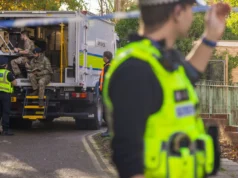
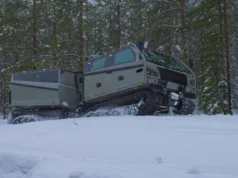

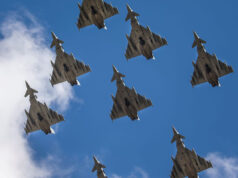




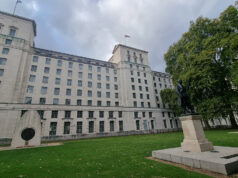
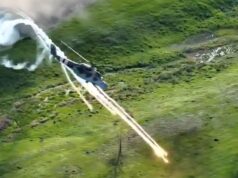

We don’t want a repeat of 1957 Defence White Paper. These machines will help. But they are decades away from replacing troops. Also it is a bit simplistic to think that unmanned means cheaper and smaller.
It would be interesting to know how much work companies like Boston Dynamics are doing on human analogues for CQB/FIBUA like scenarios. In the fights in the future mega-cities these will be life savers.
This is only the beginning. In 20-30 years 40% of all battlefield activity could probably be autonomous? Why risk lives driving convoys in danger zones when an automated vehicle can achieve the same ends? The rapid move to autonomous systems, also addresses manning, by reducing frontline personnel to a level that is more cost effective. High-quality troops will be more focused on actual fighting scenarios and less on logistics.
One other issue. As with meat suppliers being targeted by hardline vegans, it might just be the start of habitual freedoms being far more scrutinised by society? There could come a time when being in the services is perceived by many, as borderline barbarism. I know it sounds unlikely, yet such a mood swing will not reduce the military threat, just how we fight wars?
There are times like that but they come and go like the seasons. During the latter half of Vietnam US soldiers were seen as murderers and baby killers. People initially had a dim view of service personnel during the invasion of Iraq.
But then there are also times like WW2 and the Falklands War, where people also tend to rally round the flag more.
I don’t think that it’ll ever get to the point where being in the forces is seen as just short of barbaric, not by the wider public at least.
I also think that HMG should start promoting the forces more as viable careers; uni is so expensive and a lot of people from poorer backgrounds (traditionally where a lot of enlisted troops come from) see a lot of things like college, training etc as out of their reach. HMG should promote them as a way of learning new trades and seeing the world.
I know how easy it is to travel nowadays but if you’re from a poor inner city estate, in a family on low income or not even working at all, it isn’t easy to do, or to learn new skills. People in that kind of life often feel trapped in poverty: HMG should be promoting the forces to people in those situations as an escape to a better life.
This is a difficult subject and I agree in part. But the Military needs to join the modern world. Offer a career that allows anyone with enough talent to be able to thrive and achieve no matter what their background. The people trapped by poverty can join an organisation where they are trapped by class and educational background. If they work hard for decades they may be able to become a late entry Captain. Would this happen to the public school educated son of a brigadier? I think not.
University is expensive and of course it does favour the wealthy. There may still be a lack of social mobility but people from poorer backgrounds who have the drive do not need the military as they once may have. People join Sainsbury’s/Tescos etc as trolly boys/girls and become regional managers with fantastic wages and responsibilities. The equivalent does not happen much in the military. In my opinion the military needs a fundamental change of its whole structural concept.
”If it ain’t broke don’t fix it!” If a nation of 66.57 million is struggling to recruit an army of 82,000 then perhaps it is broken.
Although companies like Sainsbury’s et al have restructured so it’s harder for those same people to progress. They’ve made redundant a swathe of managers and team leaders. I used to work in a large Sainsbury’s store that had 15 managers order and about 30+ team leaders. Now its 1 store manager, 4 managers under her and 4 team leaders.
Apt of companies are doing similar so career paths are becoming harder to progress from checkout girls and trolley boys.
In the military though, those same boys and girls from the poorer backgrounds, even if they can’t make it as officers, can learn skilled trades that will make them more desirable in the civilian job market later.
The military system is similar the world over though; ours is actually easier, I’d say, as you don’t need a degree to become an officer.
I read somewhere that there are more officers who make it up from enlisted ranks in our military than in the US military.
I apologise as this is going a little off the topic of the article but I again agree with much of what you are saying. There can be huge benefits to anyone who joins the military. But that would/should be the case no matter the organisational structure.
I will reference this Nicholas Drummond article (https://uklandpower.com/2018/11/07/do-we-need-to-simplify-the-rank-structures-of-uk-armed-forces/) I agree with much of what he says but I would go further and say the Officer/Enlisted divide is no longer necessary. I understand the evolution of the system and how in the past it was the most suitable system for the social structures and educational levels of the times. I no longer believe that it is the best method. I think a grade system similar to that proposed in the article open to all with the talent and ability to learn will aid with recruitment and retention. A career you can take as far as you are able (or perhaps only as far as you desire) not as far as a system will allow you.
There is no reason people of a poor background who are not academically gifted cannot still thrive in a variety of roles. Those who can achieve a higher educational level should not be held back by any systems or traditions. But I have ranted long enough. I am certain essay after essay could be written on this subject.
100% agree with you on that one, some of the best officers I have worked with came from the ranks. We should change the system so you can only go to Sandhurst if you have been at least a junior NCO, it will cost no more as the officer will already be trade trained so won’t have to go back through Phase 2 ect and you will no longer get the new officer who don’t know his arse from his elbow.
Yes, you are right Steve, however, in this age of fast access to the media and the hundreds of Apps, people with strong anti-war beliefs could make inroads to recruiting? This may be more prevalent when the UK is fighting an unpopular conflict as witnessed in Iraq.
I agree that huge changes in how careers are designed in the services, will have a maked effect on the quality of our troops. And that is where the autonomous systems could make a big difference. We may no longer need the manual labour elements, as those roles steadily disappear with increased autonomy, hence, my comment in my previous blog above about improving the broader quality of our forces. An army education up to university levels, could allow low-income recruits access to higher education, without the needs currently applied to new uni students? This could act as a form of a bursary system as seen in the 50’s – 60’s, thus allowing low-income students a real chance to blossom academically.
The army is in the middle of a manning crisis, 100% of our core equipment is obsolete, we have been reduced in size to a level that makes us irrelevant on the world stage and we are in the middle of a restructuring that will reduce our combat power still further. So why in Satan’s left testicle are we putting effort into vanity projects like this? Have we turned into Russia? Is our perceived capability more important then actual capability?
We should be concentrating on getting the basics right first, high intensity warfare, divisional level manoeuvre, actual combat power! Not p*****g our budget away on projects that might look cool but bring very little to the table.
Looking at British defence on a whole, I am struggling to find a single decision, be it on strategy or procurement that I think worked well, not one. Most of the kit we procure is massively over budget or just plain the wrong kit, if we do get the right kit it’s in such small quantities that it has no operational effect anyway. Some of the decisions made on re-basing/re-structuring have been nothing short of insane, there has been numerous instances of cost saving measures that have actually cost significantly more money than doing nothing.
Someone needs to stand up and say enough is enough, the entire system has failed and we need to start again. If defence was a civilian company half of the head sheds would be in jail and the other half would be stacking shelves.
What else can I have a whinge about?
BV
You haven’t mentioned Brexit mate!
BV Buster I’ll try and cheer you up. Imagine this was any continental european defence website ? See things ain’t so bad.
Well when you put it like that all is rosy.
100% of core equipment is obsolete? We have a lot of gear that is dated and maybe not the best available but obsolete is clealry not the case.
1. Body armour has just been replaced
2. Light and personal weapons, maybe not best in class but still effective.
3. Helicopters are all still top end if short on frames
4. Challenger is very lethal, just maybe no longer world beater, but still tier 1
5. Foxhounds are meant to be decent and same with most of the Iraq/afgan brought gear.
6. Starstreak is still effrctive for pop up defence.
7. Rapier yes obsolete
8. Warriors are showing age but still do their job
9. Typhoon up there with the best
10. T45/t23 still up there with the best
11. Heavy lift, best outside US
12. Reaper, still very effective
Etc etc
Old doesn’t mean obsolete.
Can we fight a tier 1 enemy alone, no chance but we haven’t been able to since end of WW2.
Steve: What I mean about core equipment is the primary fighting systems of the Army, superficially it all looks ok but if you dig a little deeper you will see its not great.
1. Challenger 2 is completely out of date, its gun is ineffective against modern MBTs and would struggle against newer T-72s, its sighting systems are shocking and its mobility is lacklustre at best. This is what the LEP project should address but probably won’t.
2. Warrior is nearing obsolescence, its automotive systems are ok but its turret is way past it, no stabilisation (a must) and the RARDEN looks good on paper but in real terms is pathetic, stopping to reload every 3 rounds is not practical, not to mention no ATGM.
3. CVR(T) way past it, will never be deployed because its such a liability.
4. We still have 432 in service in vast numbers! It is a core platform of the British Army.
5. AS90 needs an upgrade, its 39 Cal gun is out ranged by most other systems. But out of our core fleet it is probably in better condition than the rest.
Lets go through your list for the none core equipment.
1. Body armour. Virtus is a good system, so much better then osprey or ECBA, the helmet is a massive improvement but you can keep the webbing. How many systems have we ordered? 9000! Less then 10% of the army have it (I’m sure we will order more). Cast your mind back to TELEC where we didn’t have enough body armour for everyone, we now have nowhere near enough Virtus to cover just the combat troops.
2. Personal weapons. SA80 is under rated I agree but it’s a pig to carry, only for right handed shooting (sort of) and importantly is limited by its ammunition when it comes to penetration. After speaking to the UK H&K rep a few months ago, it wouldn’t be that expensive to replace. Also, we are removing LMG from service!!!
3. Helicopters. Again proves my point, AH64 is world leading but only 50 in service, Wildcat is shocking and brings nothing to the battlefield but cost an absolute fortune. The vertical lift fleet is in good shape though.
4. You are correct about Foxhound/Mastiff/wolfhound ect, they are great at what they do, counter insurgency ops but are useless at war fighting.
5. Starsrtreak is good, shame it’s on a CVR(T) platform.
6. The rest of the kit you mention are RAF and RN who are in a much better position.
To summarise, the parts of the Army that actually does the fighting, the tanks IFV arty ect are in a diabolical state, not just through age but also because of whole fleet management failing as a project. We have the budget for a tier one army, we spend vast amount of money on useless stuff then gloss over the fact that our size and equipment limit us to fighting tier 3 forces.
BV
Totally agree on the lack of platforms, no question there, but we have geared for coalition warfare and so numbers come less of a problem. Whether that is the right or wrong decision is another story. The question based on coalition warfare, is whether we have enough gear to support the troops we do deploy, which i assume would never be more than 20k.
However I still think most of the gear is not yet obsolescent, outside maybe the US (Israeli / Saudi but there are other questions there) we are still on par with any other possible opponent. After all ts not just the UK that has let upgrades slide, so have the rest of the world. Russia is going through a modernisation program, just like us, as is China and pretty much every other nation that could be a threat.
I hadn’t realised the low buy of Virtus, that is just criminal, especially after what happened early on in Iraq/Afgan.
From what i read the Chally can still very effectively take out any tank out there, and unless i have missed something i have seen no evidence to counter this. The main problem however is it relies on outdated depleted uranium shells, which militarily are highly effective but not expensive and questionably safe. Its biggest weakness is more defensive, it really has nothing to defend itself against Manpads and the like.
On point 4, are you saying Iraq/Afgan were not a war? and are you coming to the conclusion that we are more likely to have a pitched battle than counter insurgency war next? My feeling is the reverse, the future will contain many more counter insurgency wars and very few big peer warfare and we need to gear our soldiers to be able to fight them battles. Think cold war, there were multiple proxy wars, all of which were effectively counter insurgency, but limited heavy equipment wars.
The CVR(T) is a problem for counter insurgency warfare, but it is about to be replaced by the Ajax, although i agree its a shame about the stormer platform not being replaced, this is a major gap in my opinion.
BV
“Wildcat is shocking and brings nothing to the battlefield but cost an absolute fortune.”
I’ve mentioned this before on here but was shot down in flames.
As far as I’m concerned this was “jobs for the boys” in ex brass having interests in Yeovil and having to keep the home factory going, for a piece of kit very expensive indeed.
I read we were offered 50 Blackhawk for 300 Million.
This argument rears its head with the Tides of the RFA. The balance between home built at vast cost and kit that is useful at a good price that gives the military what it wants.
Steve. The problem with challenger 2 is that it’s gun used to be world class, in all of the publications on the weapon it states how effective it is, the problem is those publication were written twenty years ago and it has now at a point where it is no longer competitive. To put it into perspective a 2A46 M5 fitted to a T72 out performes Challengers gun by quite some margin, it is not in the same class as the decades older RM L-44. The gun is not reliant on DU, there are none DU rounds available but they are so under powered they are not worth firing. When it comes to tank on tank warfare you need to guarantee that the round you are firing does the job, you won’t get a second chance to fire. What if there is a conflict with a 3 rate country that just so happens to have a fairly modern MBT? Do we just call it all off?
Iraq and Afghan was counter insurgency, not high intensity warfare, if you send an MRAP to fight a propper AFV it will get spanked.
Bv
Surely the problems you outline are best solved by automation. The Navy and the air force are able to do significantly more than at any time in history with less people than ever before. The army has very little productivity improvement since the Second World War. A country like Britain with very high skilled expensive labour can’t be expected to go toe to toe with a third world country like China or Russia if we use the same outdated equipment and artillery as they do. We can leverage our vastly superior technical capabilities especially in AI to deliver more punch through use of autonomous systems. A fleet of AV’s could proceed and armoured division as well as provide enhanced screening of its flanks. Suddenly one armoured division becomes more like a corps inits ability to operate. Our equipment budget is massive compared to most but much of it is spent servicing equipment that has to be used constantly for training. Autonomous systems can be bought and stored until needed. This saves a fortune in running costs etc and allows us to get a much bigger bang for our buck.
I don’t think the UK needs to be relevant on the world stage land power wise anyway BV. We are not a land power.
We should however be relevant in the other domains.
RN. RAF. UKSF. Intelligence. Deterrent.
The last 3 of those we already are highly relevant already.
Army should be structured to provide one war fighting division. This is what A2020R says it will be able to do but I agree there are many gaps and shortfalls. Light rapid reaction with the marines and paras, with DSF.
Strike Brigades were a cover for cuts and a headline grabber for Cameron to sound off about.
Agree on the restructuring decisions too. I’m curious about your rebasing comments as I thought on the whole that aspect makes sense.
Daniele: I agree that we are not a land power, I know that, you know that, I’m just not sure the politicians know that. We spent a lot of money in the land domain, we should be getting a lot more out then we currently are, it seems like we are wasting money on areas that we will never use because they are not competitive, be it in quality or mass. We should decide to invest properly or completely de-invest and push the money into areas where we can be competitive, Imagine how many F-35s we could buy or how many T-26 we could crew if the Army budget was reduced significantly.
I think the idea of “Strike” is spot on and when done properly is a game changer. Unfortunately we are not doing it properly and it is getting fudged like the rest of the structural changes. What is the point in having a strike brigade with no organic artillery or engineer support? It seems like the idea of fitted for but not with has somehow managed to migrate to the Army.
My rebasing comments don’t come from the idea of rebasing rather from its execution, it was and still is being done badly. For example, an un-named unit gets moved to a new location, told to settle down in location as they will be staying for the foreseeable future. People buy houses, get settled down only to be told they are moving again. Un-named unit moves to the other side of the country and told settle down as they will be staying for the foreseeable future. People again buy houses and get settled down only to be told they are moving back to the original location and now need to sell up. It seems we spend too much on recruiting and not enough on retention.
BV
Understood re rebasing. Thank you.
Will be interesting how Strike works out.
The two artillery regiments have Light Guns. Talk of being replaced by 155mm self propelled guns alike Ceaser. Agree as things stand woefully inadequate.
The two Engineer regiments are being brought up to full strength squadron wise, as they previously had reserve complements. I’ve no idea what they will issue them with. Titan Trojan Terrier too heavy obviously.
Boxer wheeled and Ajax tracked I just don’t understand. As things stand. And in doing so the armoured brigades lose their organic recc regiments.
General Carter’s ideas I believe.
I would not like the army reduced too much. But do agree as you know that the other services should be the main effort.
Soberingly. The Land domain gets the biggest budget, for so little. I guess most of thst is personnel costs.
Cheers. And I agree with David. Grass not greener elsewhere by any means.
Strike is interesting, the idea of a strategically mobile brigade that is able to self deploy opens up so many possibilities. For example, think of Russia and its most dangerous course of action, full on invasion of Eastern Europe, we all mobilize (not me, I’m a 15 year old Chinese kid) to counter the threat. How long would it take to get a sizable force to say Poland? Lets say 2 reinforced mech brigades, with all its bells and whistles?. Hundreds of Challenger 2s, Warriors, AS-90s, 432s, CVR(T)s will all need to be put on the back of a truck and shipped to the ports and loaded onto ships. Could we sail them directly to a Polish port? The Baltic will be locked down so that’s a no go, the only option is to cross the channel and use French and German Infrastructure to move the units to Poland. The French and Germans will be using their own rolling stock so a rail move will be imposable so the only other option is to move by road. The army has nowhere near enough low loaders to move the kit in one go and even if we press civilian vehicles into service the move will have to be conducted over a number of stages. This whole process will take at least a month by which point the Russians have won, dug in and reinforced their positions.
Lets look at the same scenario but with two strike brigades. No need for low loaders, no need for rail flats, just mount up and floor it down the motorway to Dover, cross the Channel with a cheap P&O ticket. The brigade can then self deploy in fighting order up to the FLET, no need to stop short to unload, just straight in there giving Ivan the good news. This will take a matter of days and will catch the Russians in the critical opening phases of the conflict, although deployed combat power will be less, the enemy will also be on the back foot.
This model all depends on every component of the brigade being strike capable, all on wheels (possibly Ajax) and all capable of travailing great distances unaided. So what? Well that means we currently have no platforms that fit the bill, Mastiff could be used but brings nothing to the fight when deployed. This is why we need boxer, in great numbers and in a myriad of flavours.
This all begs the question, why do we have heavy armoured vehicles at all if we can never deploy them?
BV
Yeah we should just do permanent home bases like the Yanks. 4th Infantry division, for example, is based out of Fort Carson in Colorado, and that’s it’s permanent home base.
Would be much better for the soldiers as they don’t need to up sticks every 3 years or so. They can buy houses in the local area, freeing up army housing for soldiers coming into the ranks out of training. Would also build better links with the community and avoids the expense of moving around the country. Also less disruption for spouses and kids; the latter can go to local schools without having to transfer all the time and disrupt their education, and partners of soldiers can have their careers and not have to worry about moving all the time. Seems like a win win to me.
My dad was in infantry for 25 years, Duke of Edinburgh regiment, and moved every 2-3 years. When i was born he was only 4 years from retirement so it didn’t affect me really thankfully.
I don’t really have anything to say about BREXIT, it’s all going swimmingly if you ask me.
The un-manned vehicle concept makes sense if it can actually do what it says on the tin? Prototyping on Salisbury plain is I hope just a first step, as how would these cope in the arctic, deserts or in a jungle environment? There are actually two types of vehicle required, a method of safely resupplying forward deployed troops, as these vehicles have been trying to do. But also a vehicle that can deploy with the troops that can carry extra ammo, food, batteries etc. We have been using the quad and trailer mostly but something that is just as robust and flexible but is quieter and can handle the same terrain or better. I don’t believe battery technology is there yet, so would require an engine. If it was autonomous with a follow me mode or go to x way point would be very useful.
DaveyB
Would it be cheaper to have a multi tasking UGV rather than have separate types?
Further to your comment..
Portable\flexible solar power kits attached to the UGVs may help with recharging batteries.
Stop start engines saving fuel\electricity?
Those two are stuff we already have
How much fuel could they carry? and if they were to be hit by enemy fire, how vulnerable are they to going bang !
Like your comment as Its got me thinking ;P
I hope they make some rapid decisions on designs and show them in the near future to what they have in mind and their next phase of R & D.